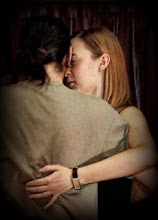(II) The
encuentro / marathon (aka (Italian) raduno)
One form of tango event which has recently been gaining
popularity is the so-called ‘encuentro’, a marathon-type of event. It usually
happens over a (long) weekend. Its main purpose is dance, and accordingly
focuses on milongas and creating the best environment for them. There may also
be workshops organised on this occasion. Irrespective of this, there usually
are daytime milongas too, in addition to the night milongas which last all
night. Depending on the direction the event takes (according to the shift in the popularity
of the workshops or that of the milongas, or the intention of the organisers) the
event may turn into a festival, a tango holiday / a workshop weekend, or a
marathon. In any case, here the workshops or seminars usually address a limited
number of participants (15-20 couples) and are quite homogenous in approaching
topics. The target addressee of the classes may be different from that of the
milongas, and the workshops may even be organised in parallel (adjacently), and
not thought of as intrinsic or defining for the event. In fact, the more the
milongas gain in popularity and will be frequented by more numerous and
experienced dancers, the dimmer will the focus be on the workshops. If for the
sole reason that they can only hold so many course participants. Should the
workshops gain in popularity, the milongas will become secondary in
interest/focus and vice versa.
As long as the main focus of the event is on milongas, as many
and as long as possible, it is a marathon-type of event. The difference in
denomination could, I suppose, be that of the declared goal: ‘marathon’
imprints dancers in advance with the idea of non-stop
they-shoot-horses-don’t-they kind of dancing, while ‘encuentro’ aims at warming
up participants to the idea of being (re)united, spending time together in one
whole homogenous group, including having meals together, being accommodated in
the same venue, and creating an overall atmosphere of cosiness, friendliness,
and familiarity.
In my experience, both encuentros and marathons create and
thrive on this atmosphere of intimacy. You will never feel as at home as at
such an event. Hosts usually go out of their way to provide you with the
highest standards of comfort possible. The only step which remains untaken is actually settling in and spending the rest of your life there. If at first I
was rather discomforted by having to keep up with the pace at which my schedule was worked out for me
(‘brunch between 13-15, tango café/aperitango between 15-20, dinner at 20,
milonga at 22 until 6…’), more recently I’ve let go, either gone with the flow
or picked and chose, and ended up being impressed by the attention given
to the smallest details (thoughtful welcome presents/souvenirs, massage rooms,
foot soaking tubs, comfortable armchairs/sofas for naps, - oh yes, how
appalling, actually lying down and lavishly sleeping during milongas! - , and
such well-equipped bathrooms that if a number of natural disasters were to catch me in there, let’s just say I’d be able
to take care of pretty much any problem).
The core of the event, the supporting pillar, is the
milonga, that is, the actual dancing. And as such, the utmost importance is
given to making it the best. The common denominators in most of these events are: participation limited to a number of 120-180 people, gender balanced,
participation only possible by registering and paying in advance (so no ticket-selling at the entrance), pre-set
seating at the tables (mostly at encuentros), usually the same venue for
the entire duration of the event, music generally traditional and
organised in tandas and (non-danceable) cortinas, and no orchestras
playing live or any other manifestations which would disrupt the flow of the milonga. The DJs are highly-valued professionals and you will therefore
usually meet the best ones here. The milongas are seldom interrupted for any
reason; there may be a demo on Saturday around midnight, given by the teachers
holding the workshops or by friends of kindred spirit. Perhaps what slightly
differs is the openness of the marathon to variety, a higher ‘tolerance’ of eclectic
styles and levels, while encuentros tend to narrow the target public to fit its
frame: gathering those who are keen on ‘tango milonguero’, ‘tango nuevo’
etc. Hence, the birth of the
‘encuentro/raduno milonguero’ or ‘encuentro de abrazos’ advocating
close-embrace traditional tango, in contrast to say a ‘tango nuevo marathon’.
Also, encuentros seem to be more conservative, being stricter about codes and
etiquette: invitation to dance is usually made by cabeceo, not at the table, and is for one tanda at a time only; couples do not, under any circumstances,
dance two or more consecutive tandas;
close embrace is usually favoured, and social tango is preferred in favour to tango escenario (so no high
boleos, ganchos, and definitely no leaps or somersaults), although such tends to be the case in marathons as well, while all of the former may be acceptable in marathons and
other such gatherings.
Finally, the downside of such an event would probably be the
lack of freedom or variety, the alert pace. You’re on a rather tight program if
you take the whole package (which is what you should do if you want to fit the
frame, be a part of the group and enjoy the experience to the full). You can’t
really have half of a package holiday, so this might not be the best place for
control freaks or undecided drifters. It is probably an enjoyable experience for tango cocoons, and it’s definitely the place for you if
you know what you want and like, and what you like is A LOT OF (good quality)
dancing, possibly also socialising, hanging out with friends and being open to
making new ones. Though while the latter is not necessary, the former is a must for the enjoyment of such an event.
TO BE CONTINUED










Niciun comentariu:
Trimiteți un comentariu